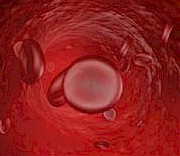Related terms: blood count, CBC, blood screen
A complete blood count (CBC) is one of the most common blood tests. It is usually done as part of a routine checkup and can help detect a number of blood disorders, such as anemia, infections, clotting problems, blood cancers, and immune system problems. A CBC test measures many different parts of your blood, including the number of red blood cells, white blood cells, and platelets. It also measures the hemoglobin (iron) levels in your blood and your hematocrit, which is how much space your red blood cells take up in your blood. Another part of a CBC test is the mean corpuscular volume, which is a measure of the average size of your red blood cells. Specific blood tests can be performed to detect problems with your heart, lungs, or blood vessels.
- Cardiac enzyme tests measure the cardiac enzyme levels in the blood. Certain enzymes will be present if the heart muscle (myocardium) has been damaged by a heart attack, because damaged heart cells release these enzymes into the blood. The most common cardiac enzyme that is released is creatine kinase.
- Troponin tests measure the amount of troponin (a type of protein) in the blood. Troponin affects how the heart muscle contracts. If there are high levels of troponin in the blood (troponin T or troponin I), there is most likely damage to the heart muscle. The amount of troponin released into the blood correlates with the degree of damage to the heart muscle.
- Arterial blood gas studies measure how well the blood is being oxygenated in the lungs.
- Lipoprotein (cholesterol) profile measures how much fat or lipid is in the blood.
- Blood cultures can be used to determine if there are microorganisms (like the bacteria that causes endocarditis) in the body’s system. After the blood is drawn, it is placed on a culture, which helps the bacteria grow. The bacteria is then analyzed to determine what type it is and what medicines can be used to kill it.
- Blood clotting tests measure the blood’s ability to clot. Clotting stops the blood from flowing out of the body when a vein or artery is broken.
See also on this website: Blood (Anatomy)
See on other sites:
National Heart, Lung and Blood Institute
www.nhlbi.nih.gov/health/health-topics/topics/bdt/
What are Blood Tests?
Updated August 2016



